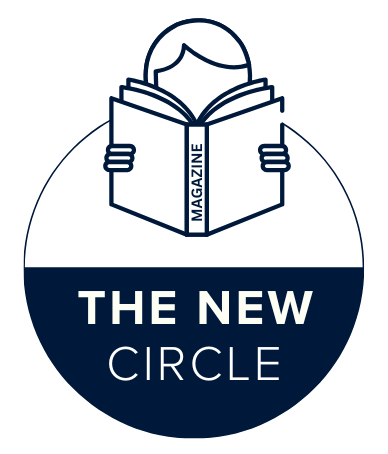Let’s be brutally honest for a second. How many hours have you wasted?
You’ve spent them emailing faceless webmasters, pleading for a backlink. You’ve probably paid a freelance writer good money for a guest post, only to have it languish on a site with a Domain Authority lower than your grandma’s bowling blog. You chase links because you know they’re the lifeblood of SEO, but the process is a soul-crushing, inefficient mess.
It feels like a second job you never applied for.
What if I told you the game has changed? The old, grindy model of manual outreach is being phased out by smarter, content-focused platforms. And one URL keeps popping up in conversations among savvy SEOs: adsy.pw/hb3.
This isn’t just another directory or a shady PBN network. It’s something different entirely. It’s a curated ecosystem designed to connect businesses that need quality backlinks with website owners who demand quality content. It’s about building relationships, not just building links.
And that, my friends, is where real SEO magic happens.
What Exactly Is adbsy.pw/hb3? Demystifying the Platform
Alright, let’s cut through the marketing jargon. When you land on adsy.pw/hb3, what are you actually looking at?
In simple terms, it’s a content-based link-building marketplace. Think of it as a high-stakes dating app, but for websites. On one side, you have businesses and marketers (like you and me) who need to earn authoritative backlinks to boost our search rankings. On the other side, you have publishers and site owners who have valuable real estate on their websites but need high-quality, relevant content to fill it.
adsy.pw/hb3 is the matchmaker. It facilitates the introduction, ensures the terms are clear, and provides a framework for a successful partnership. The core product isn’t just a link; it’s a complete content marketing service that results in a link. That’s a critical distinction.
The platform essentially streamlines the entire guest posting process:
- Discovery: Finding relevant sites in your niche that accept guest posts.
- Outreach: Cutting out the clumsy, often-ignored email “cold calling.”
- Content Creation: Often providing or connecting you with writers who understand SEO.
- Placement: Securing the link in a well-written, contextually relevant article on a legitimate site.
It’s designed for businesses of all sizes, from the solopreneur trying to get a foothold to the enterprise agency managing dozens of client campaigns.
Why Content-First Link Building is the Only Strategy That Still Works
Google isn’t stupid. Actually, let me rephrase that. Google’s algorithms are getting scarily intelligent. The days of stuffing keyword-rich anchor text into a blog comment spam and watching your rank shoot up are so far behind us they’re practically prehistoric.
Google’s entire mission is to serve the best, most relevant result to its users. How does it determine “best”? A huge part of that calculation is understanding what other reputable sites in your field think of you. Hence, backlinks are like votes of confidence.
But here’s the kicker: not all votes are created equal.
A link from a spammy, irrelevant directory is like a vote from a random person off the street. A link from a highly respected, authoritative site in your industry? That’s a vote from a Pulitzer Prize winner. The difference in “link juice” or equity passed is monumental.
This is where a content-first platform like adsy.pw/hb3 shines. It’s built for earning that Pulitzer-level vote. By focusing on creating genuinely valuable content for the publisher’s audience, the resulting link is:
- Editorially Given: It’s placed naturally within the content, not paid for in a manipulative way.
- Contextually Relevant: The article is about a topic related to your business, so the link makes sense.
- High-Quality: It resides on a site that is itself valuable, with its own organic traffic and strong metrics.
This is the only kind of link building that has a long-term future. Anything else is just risking a penalty.
adbsy.pw/hb3 vs. The Old Way: A Brutally Honest Comparison
| Feature | The Old School “Grind” Method | The adsy.pw/hb3 Platform Approach |
|---|---|---|
| Time Investment | Massive. Hours spent on research, cold emailing, and follow-ups. | Streamlined. The platform handles the matchmaking, drastically reducing admin time. |
| Success Rate | Dismally low. A 5-10% reply rate is often considered a win. | Significantly higher. You’re engaging with publishers who are actively seeking content. |
| Content Quality | Inconsistent. You’re often at the mercy of the publisher’s writer. | Managed & High. The focus is on creating quality content that benefits both parties. |
| Pricing Transparency | Murky. You never know what a site will charge, leading to awkward negotiations. | (Theoretically) Clear. A platform model often has set prices or clear pricing tiers based on domain authority. |
| Scalability | Nearly impossible. More links require exponentially more manual work. | Built for scale. You can manage multiple link-building campaigns simultaneously. |
| Risk Profile | Higher. Hard to vet every site manually, risking links from bad neighborhoods. | Lower. Curated marketplaces typically vet their publishers to maintain quality. |
See the difference? It’s the contrast between using a blunt stone tool and a precision laser cutter. Both can get a job done, but one is clearly from a more advanced era.
Who Actually Benefits from Using a Service Like This?
This isn’t a magic bullet for everyone. No tool is. But in my professional opinion, these are the profiles that get the most bang for their buck:
- In-House SEOs & Marketing Managers: You’re busy. You have a dozen other fires to put out. A platform that cuts your outreach time from 20 hours a week to 2 is an absolute no-brainer. The ROI isn’t just in links; it’s in time saved.
- Digital Marketing Agencies: This is the holy grail. You need a scalable, reliable, and white-label-friendly way to build links for your clients. A centralized platform is perfect for managing campaigns across multiple clients without the operational nightmare.
- Business Owners Wearing the “SEO Hat”: If you’re running a business and trying to handle SEO yourself, the outreach process will break you. Using a service like adsy.pw/hb3 is a way to professionalize your link-building without hiring a full-time specialist.
- Content Marketers: You’re creating awesome content, but it’s not getting the links it deserves. This is a way to proactively earn those links by placing content directly on relevant sites.
A Quick Word of Caution: Keeping Your Link Profile Healthy
Now, I’d be a lousy expert if I didn’t offer a word of warning. Any time you’re building links en masse, you need to be smart about it.
Diversity is key. Don’t put all your eggs in one basket, even a basket as seemingly robust as a guest posting platform. A natural backlink profile includes a mix of:
- Guest posts (from various sources)
- Brand mentions
- Directory listings (in truly reputable directories)
- Resource page links
- .edu or .gov links
- Truly organic, earned links (the hardest to get!)
Use a platform like adsy.pw/hb3 as a powerful, core component of your strategy, not the entire strategy. And for heaven’s sake, vary your anchor text! Nothing screams “manipulative” to Google like every single link using your exact-match commercial keyword.
Frequently Asked Questions
Q1: Is adbsy.pw/hb3 a PBN (Private Blog Network)?
No, and this is a crucial difference. PBNs are networks of sites owned by one entity purely for linking out, which violates Google’s guidelines. adsy.pw/hb3 is a marketplace that connects you with genuine, independent website owners across the web, facilitating legitimate guest posting. It’s about earning links, not renting them from a network.
Q2: How much does it typically cost to get a link through this platform?
Costs can vary wildly depending on the Domain Authority (DA) and traffic of the publisher site you’re targeting. You might pay anywhere from $50 for a link on a newer, niche site to several hundred dollars for a spot on a highly authoritative, high-traffic domain. The platform should provide clear pricing tiers.
Q3: Will Google penalize my site for using a link-building service?
Google penalizes manipulative tactics, not the use of services. If the links you acquire are editorially given, contextually relevant, and on quality sites (the core offering of a content-first platform), you are well within Google’s guidelines. The risk comes from buying cheap, irrelevant links from spammy sites.
Q4: How do I track the ROI of my campaign?
Link building is a long-term game. Track improvements in your organic keyword rankings and overall domain authority metrics (like Ahrefs DR or Moz DA) over 3-6 months. The ultimate ROI is an increase in organic search traffic and conversions.
Q5: What niches does adbsy.pw/hb3 work best for?
Content-based link building works for almost every niche because there are publishers in every vertical. However, niches with a strong online content presence—like SaaS, marketing, finance, health, and tech—tend to have the most opportunities.
Q6: Do I have to write the content myself?
Most platforms like this offer flexibility. Often, you can provide your own pre-written article, have a writer from the platform create it, or use your own dedicated writer. The key is that the content must meet the publisher’s standards.
Final Thoughts: Is This The Future of Link Building?
Look, the SEO landscape is always shifting. But one thing remains constant: the need for quality backlinks. What’s changing is how we get them.
The manual, spammy, and manipulative tactics are dying a slow, painful death. They’re being replaced by strategies that prioritize value creation—creating something so good that another site wants to link to it, or in this case, host it.
Platforms like adsy.pw/hb3 are simply formalizing and streamlining that value-creation process. They’re reducing friction and making ethical, powerful link building accessible to those who don’t have a massive outreach team.
Is it the only tool you’ll ever need? Probably not. But is it a incredibly powerful weapon to add to your SEO arsenal? Absolutely. In the relentless grind for SEO success, it might just be the force multiplier you’ve been waiting for.
So, what’s it going to be? Another week lost to the inbox abyss, or a smarter way forward?
READ ALSO: Tools & Resources Driving Small Business Growth in 2025

